
17 minute read
A Technicolor Century
“Lab on Wheels”, Technicolor’s first lab circa 1916, was inside a Pullman railway car, so it could be rolled close to the set of “The Gulf Between”, Technicolor’s first film being shot in Jacksonville Florida.
By GUIDO KONDRUSS

Above: A diagram of the prism and film advance assembly in the venerable Technicolor Three Strip Camera. Right: DP Douglas Koch csc with Technicolor three strip camera DF 22, Technoparc, Montreal, 2011 A s I sat in a darkened theatre, my anticipation was palpable. I was about to watch the classic 1952 song and dance movie Singin’ in the Rain. That in itself was not unusual, because I had seen the film before on television, and even as a 16 mm print back in my long gone university days. However, this showing was promising to be much different since the film was going to be projected from a restored 35 mm Technicolor print. I was not disappointed. Soon after the vibrant images splashed across the screen, I realized that I was not simply viewing a film, but experiencing it as it was meant to be experienced through its plush and intoxicating colour. Singin’ in the Rain was one of several Technicolor films screened in its original form this past summer at Toronto’s Bell Lightbox to commemorate the storied company’s centenary. In fact, it was exactly this month – on November 19 – in 1915 that The Technicolor Motion Picture Corporation was established in Boston. “Technicolor grew out of the engineering research company founded by Herbert Kalmus, Daniel Comstock and W. Burton Westcott,” Robert Hoffman, vice president, marketing and public relations, Technicolor Hollywood,

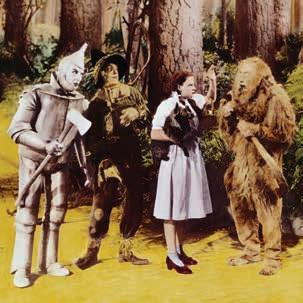
Left: Still from “Breakfast at Tiffany’s”, 1961, Colour by Technicolor Right: “Wizard of Oz”, 1939.
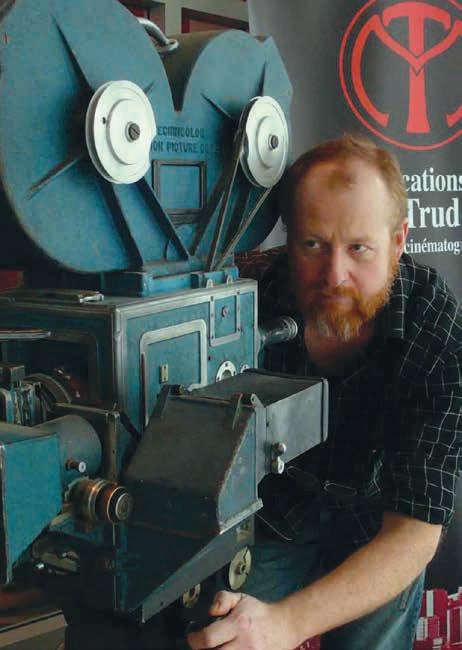
says. “Kalmus and Comstock were MIT engineering grads who did their doctoral degrees in Europe returning with PhDs in chemical and electrical engineering. Westcott was a self-taught mechanical engineering savant who had the reputation of being able to build anything.” Technicolor’s first foray into colour science for film was an additive process that used a beam splitter to record red and green images simultaneously to highlight skin tone and foliage. The images were then recombined using a special projector with two apertures and filters. While the process worked wonderfully in the lab, it proved to be too cumbersome and difficult for projectionists and did not gain wide acceptance. Still, it showed potential and kept investors interested, allowing Technicolor to hone its process over the next 25 years, which culminated in two very important inventions that would have a major impact on colour cinema and define the look of Hollywood’s Golden Age. The first innovation was a photo chemical technique called imbibition-blank, introduced in 1926. It was a form of dye transfer process where any number of colours could be applied to one side of a film base, giving film prints rich colour tones and hues. The second innovation was the development of the three-strip camera in 1932 that allowed Technicolor to do what it always intended to do – record the full colour spectrum. “With two separate movements, one bi-pack for the red and blue records, and one single strip for the green record, linked by an ultra-high precision beam splitter, the camera really was a marvel,” says DP Douglas Koch csc, who has studied the
Images: Courtesy or Technicolor except camera diagram, courtesy: The American WideScreen Museum
have been very different films and in turn the motion picture industry would have probably taken a lesser path in its develdesign of Technicolor’s three-strip camopment. era. “In every aspect it was machined Technicolor retired its threeand aligned with great precision. The strip camera in 1954 as cheaper two film movements had excellent regfilm formats gained prominence istration accuracy,” Koch adds. “The in the industry, but its proprialignment of the two optical paths with etary imbibition-blank process the beam splitter were a monumental continued for decades, being design and construction feat. I underadapted to other film stocks for stand the handling of the beam splitter the Technicolor treatment. was taken as seriously as if it were made “There were wonderful films of plutonium!” being produced in the U.S. In 1939, Gone with the Wind was the in the 1970s that were finfirst full-length feature in Technicolor ished with Technicolor IB dye to be given an Academy Award for transfer prints,” Hoffman says. colour cinematography. In the same “Francis Coppola’s four films in A Technicolor advertisement from Moving year, Technicolor was awarded a spethat decade were Technicolor Picture World February 2, 1924. cial Oscar for bringing true-life colour projects.” to the big screen. In the ensuing years, During this era, Technicolor had Seeing industry potential in Canada, Technicolor shot many of Hollywood’s morphed into a world-leading film Technicolor set up shop in Montreal most influential films and received processing company, developing 16, in 1999, followed by facilities in Vanthe Academy’s Science and Technical 35 and 70 mm prints in virtually any couver and Toronto in 2004. Although Award for its motion picture innovaanamorphic format. But as new techTechnicolor has a global footprint, Mations no less than 24 times. nologies emerged, shifting the indusjor says they are also very in tune with Technicolor may not have invented try away from film, Technicolor never regional production, giving everyone colour, but it did prove without a doubt seemed to miss a beat, embracing the the best of both worlds. that colour was an artistic endeavour digital world, reinventing itself as a “We’re a big brand, but still very and very much a part of the filmmakglobal postproduction powerhouse. It boutique-ish here in Canada,” Major ing narrative. It shaped people’s perremained innovative, daring and reccontinued. “We take care of local filmceptions and expectations of colour ognizable, so much so that when the makers and studios alike. It doesn’t in movies. Without the Technicolor French electronics giant Thompson matter if you’re Sony, Universal or an touch, silver screen classics Gone with Multimedia acquired Technicolor in independent, we have a pipeline that the Wind, The Wizard of Oz and Dis2001, it re-branded itself five years ago works, a backbone that supports whatney’s Fantasia, to name a few, would after its subsidiary as Technicolor SA. ever needs to be done regionally or A move that, according to Louis worldwide.” Major, vice president, Technicolor With colour science as its cornerCanada, was logical. stone, Technicolor continues to push “We have to define where we’re new boundaries for the next generation going. To make it clear to the maraudio and visual experience from its ket and to the industry about who research into new technology such as we are,” Major says. “It’s about our HDR (High Dynamic Range), virtual core business which is postproreality and immersive sound systems to duction through creative imagery, name just a few. As Technicolor steps
Still from Robin Hood: On the set of “The picture and sound finishing, work flow, visual effects, dailies, and into its second century, its pioneering past shines brightly as a beacon in guid
Adventures of Robin Hood”, 1938. Large square box in the upper right corner is a digital distribution, so what better brand is there than Technicolor, ing its pioneering future. For more on Technicolor’s services
Technicolor Three Strip Camera inside a sound blimp. because it’s all of those services and more.” and products please visit its website: technicolor.com
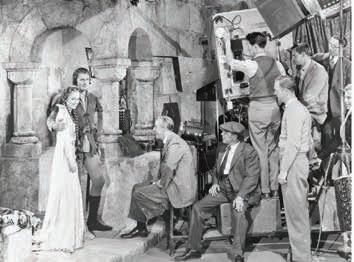
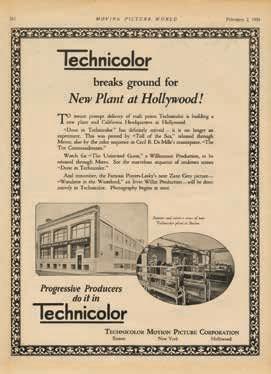
Realize your cinematic visions and create smooth, richly superior 1080/60p, full HD video footage with the full frame Nikon D810. The readout method of the image sensor has been optimised to deliver high-definition video with effectively minimised moiré and false colour. For cinematographers and camera operators, the D810 will ignite your creativity and become one of the most versatile and important tools in your arsenal. Made for Generation Image.


Vistek


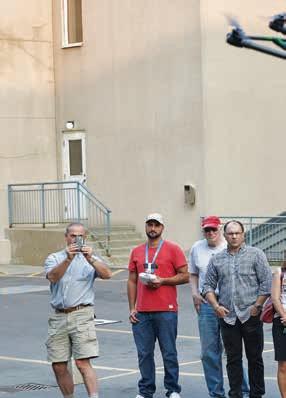
Showcases New Tech with Hands-on Event
By IAN HARVEY

Photos by WOODROW WALDEN

Showcases New Tech with Hands-on Event
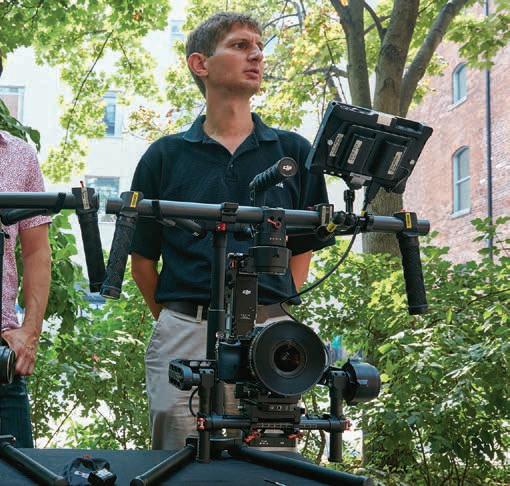
Vistek pulled out the stops to host a hands-on event featuring the new Sony a7RII, Ronin stabilizers, DJI’s newest Inspire 1 and Phantom 3 drones, as well as the new 4K Atomos Ninja As- sassin recorder in September. “It was a bit of a forerunner of ProFu- sion in November (11 th and 12 th ),” Brian Young, Vistek’s guru on all things video, said. While ProFusion is a two-day show- case and celebration of technology and the talent within the pro imaging indus- try, September’s event was an upfront and personal opportunity to test-drive the gear – including a stint flying a drone in the parking lot at the Queen St. West store in Toronto. “This is the biggest of this type we’ve done,” Young said, noting the store does BBQs and other events throughout the year. “We had 150 people register and about 400 people have been through over the day and half. It’s been busy but
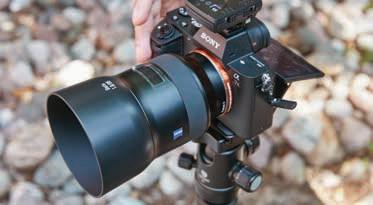

Clockwise from top left: Vistek Pro Video Product Manager Brian Young operates a drone. The 4K Atomos Ninja Assas- sin recorder. The DJI S900 Hexacopter. The Sony a7RII. DJI Ronin and Ronin M gimbals. The Ronin and the Atomos Ninja Assassin. Sony’s Patrick Chan discusses the aR7II and lenses. Vistek’s Richard Basca with the Ronin.
it’s been great, especially for the ‘copters, with people having that real pilot experience to get a feel for actually flying one.” Off the top, the big buzz was around the Ninja Assassin. Modelled on its big brother, the Shogun, the Ninja Assassin is a somewhat smaller, lighter and less featured version with a much lower price of $1,699 compared to $2,399 but offers 4K capture. “It does not have SDI or handle RAW but it’s designed for those using DSLR, mirrorless and video cinema cameras,” Peter Leitmann of Vistek said. The unit is pretty impressive, with 325ppi monitoring functionality, 7” screen size, 1920x1080 resolution and 10-bit 4:2:2 professional recording for Apple, AVID, and Adobe workflows.
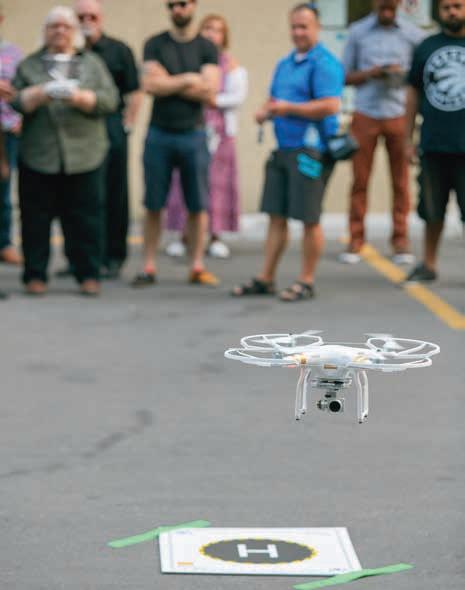
It’s a good match, coincidentally, for the Sony a7RII which is also now at Vistek. It’s a mirrorless unit which is small yet rugged enough with its magnesium alloy body protecting a massive 42.4 MP CMOS back-lit sensor. For video the upshot is onboard 4K capture, an ISO range up to 25,600 (102,400 for stills) and the result is incredible detail with those Carl Zeiss Batis lenses. For still shooters, the silent shutter means capturing continuity, and publicity on set is made easier while there are always sensitive situations where being the fly on the wall is the best option to make the picture. The small framed camera body also has a lens mount makeover to make it less prone to gap with big glass and the finish is more scratch resistant. Also on show were DJI’s latest ‘copters, the Phantom 3 and Inspire 1, the latter being the higher-end platform at $4,599, which includes two controls, one for flight the other for 4K camera. It’s an important development because as these machines get bigger and more capable, safety is always the concern. As Young noted, the industry has to adopt an upfront safety first attitude and act responsibly before authorities start to impose sanctions which will hamper the natural growth and creativity these machines bring to production. Thus, having a camera operator who isn’t distracted by trying to position the device is a much safer setup. The Inspire 1 features a carbon fibre design for strength and weight reduction, four motors with about 22 minutes flight time in perfect condition. With the battery on board it’s just shy of 3 kilograms, capable of reaching 4,500 metres. The onboard X3, FC350 cam has 12.7M pixels for a 4000 by 3000 image shooting 100 -3200 in video mode and up to 1600 in photo. The Phantom 3 comes in three modes – standard, professional and advanced – with prices from about $1,000 (the dollar makes pricing tricky in this economy). The entry-level shoots 2.7K with 720p monitoring and offers about 23 minutes of flight time with a single control. It also offers some upgraded autopilot features. The Phantom 3 advanced offers 1080p capture while the professional model offers 4K. These events are important for pros and enthusiasts alike to get their hands on the technology and get a feel for it, Vistek President Ron Silverstein said, noting some of the items on view weren’t even considered pro video gear just a few short years ago. “Sometimes you don’t even know what’s a sector in this industry until it jumps up and bites you on the butt,” he said. “Look at GoPro. People ignored them. Now they’re everyone’s crash camera on sets. It’s the same with the ‘copters and even the gimbals.”
Phil Earnshaw csc
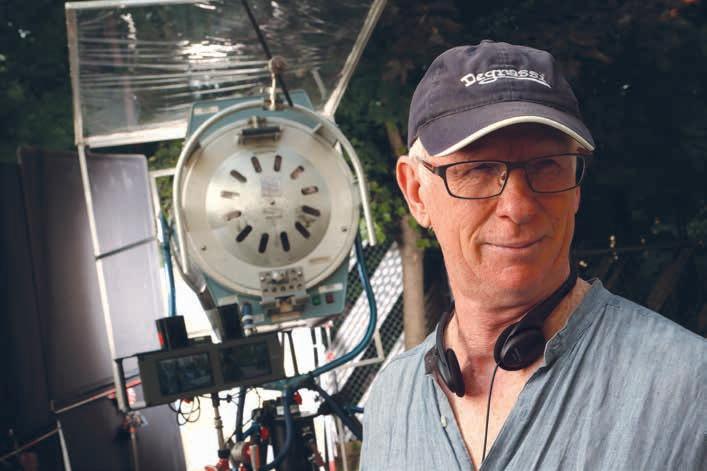
Credit: Stephen Scott
What films or other works of art have made the biggest impression on you?
Probably every film that has made an impression on me has had great cinematography, whether it’s plain beautiful like The Last Emperor or noir like Citizen Cane or raw like City of God or innovatively combined with CGI like Birdman. It’s an obvious thing to say, but the great paintings of the world are terrific fodder for us cinematographers. I always head to the Rembrandts, Carvaggios, Turners, Vermeers, Hoppers and so many others who studied and painted light. Even abstract painters like Picasso, Miro and Kandinsky teach us so much about composition, colour and balance.
How did you get started in the business?
After graduation and before I got my first real job (news cameraman at Global TV), I had yet to get a job. Being a cinematographer was just a concept and a hope. One day the phone rang and the woman on the line explained to me that she had been an extra in a scene I had shot as a student and she liked how I worked and wanted to know if I would shoot her documentary for her. So it turned out my very first paying cinematography job was also to be my most fortuitous job. Although it paid only $50 for three day’s work (plus $8 for gas to get to Collingwood and back), it led directly to the central core of my career. That producer’s name was Linda Schuyler (she was a teacher at the time) and she went on to create Degrassi. She gave me my start as a dramatic DP and as a director. I shot over 100 episodes of the Degrassi series and just directed the 500 th episode of Degrassi this summer. It’s been an amazing journey.
Who have been your mentors or teachers?
What makes someone a mentor is when that person looks at you and sees something in you and they nurture it. They believe in you, inspire you, support you, and show you the way. Jim Beveridge was head of the film department at York University when I went there, and I have yet to hear anyone speak as eloquently, as knowledgably or as enthusiastically about film as he did. Also at York, Professor Fusé showed me the rich tradition of Japanese cinema. Every week we watched Kurosawa, Kobayashi, Osu and others. (He also kindly introduced our whole class to the delights of sushi at a time when Toronto was a pre-sushi town!) Allison Feltes, Brian Dennis, Seaton MacLean from Alliance Atlantis, and Ivor Sharpe, a commercial director, all helped me immensely. My biggest
mentor has been, and still is, Linda Schuyler. She saw something in me right from the start that gave me the confidence to believe in myself and do my best work.
What cinematographers inspire you?
There are so many! Right here in Canada people like Rene Ohashi csc, asc and Mark Irwin csc, asc inspired me from the start. Going back to the early days of film, Greg Toland (Citizen Kane), James Wong Howe and Freddie Young (Lawrence of Arabia) were incredible. Storaro, Hall, Deakins, Lubezki, Wexler, Almendros, Nykvist, Zsigmond, Surtees, Frakar, Chapman, Deschanel, Seale, Richardson, Willis… The list goes on and on and continues to grow.
What is one of your most memorable moments on set?
When I was sitting on an apple box on a hot August day on the set of Traders. It had been a long season, and I was daydreaming about maybe directing one day. Sandie Pereira one of the producers (and another mentor) walked by and said, “Hey, Phil. Maybe you should direct one of these next year.” In a rare President from page 2 or some other event that represented a milestone in life. And of course, at times there were the family photos depicting life’s occurrences. I also recall that my dad owned a 35 mm Kodak Retina 1b stills camera and that a roll of Kodachrome could hibernate in that camera for a year or two before being processed. Anticipation never was a part of his philosophy; when the counter reached 36, it was time for the film to be processed and to reveal whatever seemed important at the time the picture had been taken. Recently, a film student asked how he could learn to analyze as well as appremoment of being quick-witted, halfjokingly I said, “No I should do two, in case I screw the first one up.” Amazingly, she made sure I got two episodes to direct the next year! Thank you, Sandie!
Name some of your professional highlights.
Landing the job shooting news at Global. (Got to shoot at least 400 feet of film every day and learned to think on my feet.) Leaving Global after three years and going freelance. Shooting all the early Degrassi years. Joining IATSE 667. Making a living as a director of photography for 25 years. Becoming a director. Making a living as a director for 15 years. Winning a CSC Award, having a Peabody on my mantle for my Degrassi contribution. Looking back and thinking, “Holy Crap! It worked out pretty well!”
What do you like best about what you do?
The collaboration. Working with topnotch crews who bring their A game to work every day.
What do you like least about what you do?
ciate images that he had photographed. He referenced the “immediacy” of capturing images and felt that a part of the process was missing. I suggested that he set an exercise for himself as a possible means to address this and use it as a learning curve. The exercise consisted of the following criteria: choose a subject matter and then pretend that the camera contained film. The camera had to be in manual mode. Ideally, the picture had to be framed instinctively, via a viewfinder (as opposed to a viewing screen) and after each shot was taken, no viewing or playback was allowed. Only 36 images could be gathered, after which
When egos get in the way of collaboration and people don’t connect. The usual heartbreaks of this industry – Fraterdays, sacrificing personal family time, missing out on that great job.
What do you think has been the greatest invention (related to your craft)?
It used to be video assist. When I started operating, it was a rarity. Having to remember and explain every detail of every take to everyone involved was exhausting! Now the best thing is the iPhone! It may prove to be a mixed blessing for real cinematographers, but 4K video in your pocket, amazing! Cinematography within reach! Looking back to the days when they used to shoot indoors with 16 ASA film and needed to have hundreds of foot-candles just to get an exposure, it blows my mind. We’ve come a long way thanks to stocks and sensors with 14 stops of dynamic range. LED lighting is pretty cool too.
How can people follow your work?
philearnshaw.com
vimeo.com/philearnshaw time the camera had to be put away for at least two days for “processing” the images. The intention was to create anticipation so that when the images were viewed, there would be an opportunity to evaluate the original thought process and approach without the benefit of the immediacy of digital, from both a practical as well as technical standpoint, and hopefully learn from the experience. I personally, have done this many times and find that I definitely have more appreciation and understanding for my photographic endeavours. Give it a try sometime. Happy shooting!



